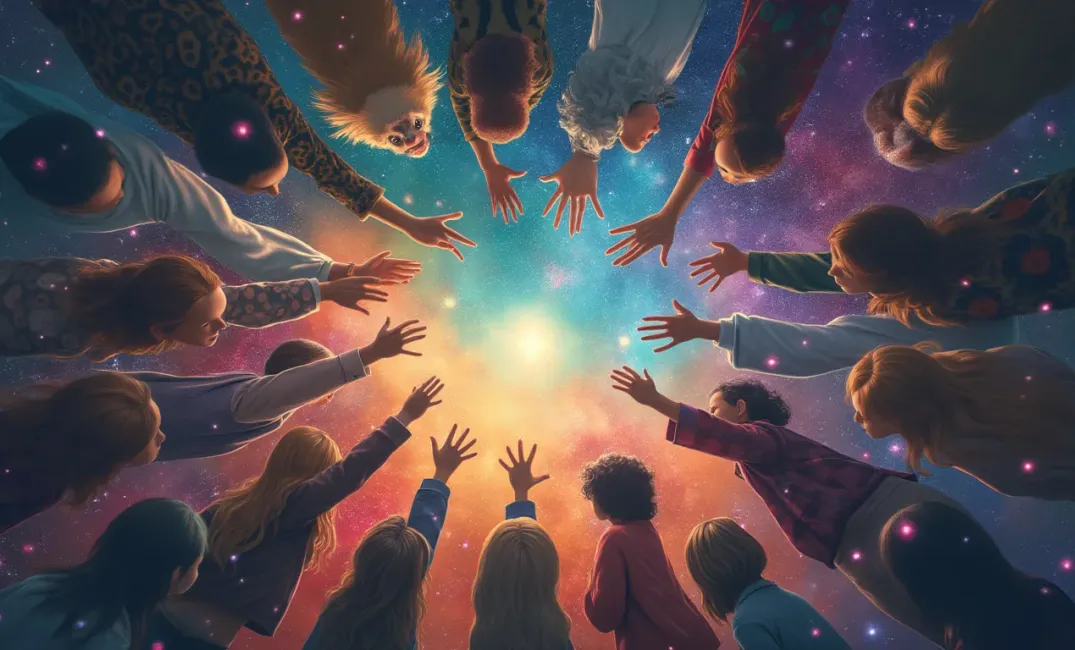Introduction: The Heartbeat of Humanity
Empathy—the profound ability to connect, understand, and share the feelings of others—is an invisible yet powerful force that has shaped humanity's collective journey. It transcends individual experiences, binds cultures, and holds the potential to guide societies toward unity and healing. As we navigate an uncertain future, empathy remains a beacon of hope, an essential compass that guides individual actions and societal progress. This entry delves into the multifaceted nature of human empathy, its evolutionary roots, cultural manifestations, and its transformative impact across history and into the future.
"Too often we underestimate the power of a touch, a smile, a kind word, a listening ear, an honest compliment, or the smallest act of caring, all of which have the potential to turn a life around." — Leo Buscaglia
The Evolutionary Roots of Empathy
Biology and the Social Brain
- Genetic and Neurological Foundations: Empathy, like many human traits, has deep evolutionary roots. Mirror neurons, discovered in primates, provide a neurological basis for shared experiences, enabling us to mimic and understand the emotions and actions of others. This biological foundation is critical to the development of social cohesion and cooperative behavior.
- Survival through Connection: In early human societies, individuals who exhibited empathy and cooperation were more likely to survive and reproduce, fostering stronger community bonds. Empathy facilitated mutual support systems and collective problem-solving that were vital in navigating environmental challenges and ensuring group survival.
Empathy in the Animal Kingdom
- Compassionate Creatures: Empathic behavior is observed in various animal species, from elephants mourning their dead to dolphins coming to the aid of injured companions. These behaviors underscore empathy's evolutionary advantage in promoting group welfare. Understanding empathy in animals provides insight into its primal importance within social species.
Cultural Expressions of Empathy
Empathy in Philosophy and Religion
- The Golden Rule Across Cultures: Many philosophical and religious doctrines emphasize empathy and compassion. The principle of treating others as one would like to be treated—the Golden Rule—appears in diverse belief systems, from Confucianism to Christianity, emphasizing universal empathy as a cornerstone of ethical living.
- Eastern Philosophical Insights: Buddhism highlights compassion (karuna) as essential to enlightenment, advocating for understanding and helping others as intrinsic to personal and communal well-being. Similarly, Hindu texts like the Bhagavad Gita encourage empathy as integral to duty and social harmony.
Art and Literature as Conduits of Empathy
- Literature's Empathic Power: Stories, narratives, and dramatic arts facilitate empathic understanding by allowing individuals to step into others' lives and perspectives. From Dostoevsky's explorations of the human condition to modern autobiographies, literature breaks down barriers, fostering connection and empathy across diverse audiences.
- Visual Arts and Music: Art evokes powerful emotional responses, forging connections through shared experiences and interpretations. Music, in particular, transcends language barriers, resonating with emotions universally to convey empathy in ways words alone cannot.
The Impact of Empathy on Society
Empathy in Social Movements
- Catalyst for Change: Empathy has driven social change throughout history. Movements for civil rights, gender equality, and environmental conservation have drawn on empathic connections to highlight injustices and motivate collective action. Leaders like Martin Luther King Jr. and Mahatma Gandhi harnessed empathy to unify and mobilize people toward a common cause.
- Community Building: On a micro level, empathy fosters community resilience and social cohesion. Initiatives that encourage understanding and bridge cultural or socioeconomic divides, such as interfaith dialogues and community service projects, rely on empathy to build inclusive and harmonious societies.
Empathy in Modern Technology and Communication
- Digital Empathy: The digital age presents both challenges and opportunities for empathy. Social media platforms can amplify empathic communication, connecting individuals around the globe instantaneously. However, they can also depersonalize interactions, leading to empathy erosion. Innovations like virtual reality are explored to foster empathy by immersing users in others' perspectives, creating virtual experiences of real-world challenges.
- The Role of AI: As artificial intelligence becomes increasingly integrated into society, the development of empathetic AI—systems that recognize and respond to human emotions—poses ethical and technical challenges. Such technologies have the potential to enhance mental health support and improve human-computer interactions but require careful consideration to ensure meaningful and respectful engagement.
Challenges and the Future of Empathy
Barriers to Empathy
- Ingroup/Outgroup Dynamics: Psychological tendencies favoring ingroups over outgroups can hinder empathy, perpetuating biases and societal divisions. Overcoming these barriers necessitates conscious self-reflection and education, promoting inclusivity and mutual respect.
- Empathy Fatigue: In an interconnected world, constant exposure to global crises and suffering can lead to empathy fatigue, where individuals feel overwhelmed and emotionally depleted. Balancing empathy with self-care is crucial to sustaining compassionate engagement.
Nurturing Empathy in Future Generations
- Education and Empathy: Instilling empathy in youth through education is vital for fostering globally-conscious citizens. Programs emphasizing social-emotional learning, cultural exchange, and service learning cultivate empathy, promoting active listening, conflict resolution, and global awareness.
- Empathy in Governance: Imagining a future where empathy guides policy decisions and international relations aligns with emerging paradigms of compassionate governance. Empathy-driven policies prioritize human dignity, sustainability, and justice, addressing complex global challenges with holistic understanding.
Conclusion: A Pathway to Unity and Healing
Empathy is the thread that weaves through humanity's diverse tapestry, connecting individuals, cultures, and generations. As societies transcend borders in pursuit of new horizons, empathy remains a guiding force that nurtures unity, fosters healing, and inspires innovative solutions to shared challenges. Its enduring essence lies in its ability to transform individuals and communities, catalyzing progress towards a more compassionate and harmonious world.
In the grandeur of the cosmos, empathy asserts the profound truth of our shared human experience—a timeless testament to our interconnectedness and resilience in the face of uncertainty.
"Empathy is about finding echoes of another person in yourself." — Mohsin Hamid
As we continue to chart unknown frontiers, may empathy guide humanity toward a future filled with understanding, unity, and renewal.
EVOLUTION, HUMANITY, CULTURE, EMPATHY, SOCIETY, COMPASSION, CONNECTION, FUTURE, TECHNOLOGY, HEALING

